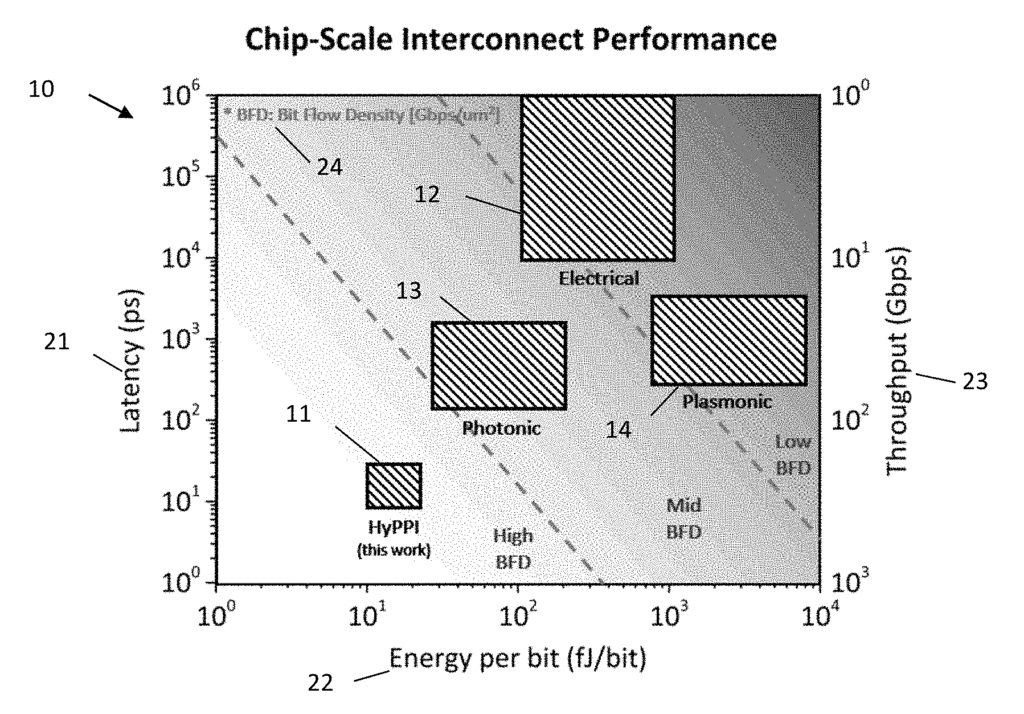Boost Data Transfer Efficiency with Hybrid Photonic-Plasmonic Interconnects
Introduction
As global data demands soar, the need for faster, more efficient interconnect technologies has become critical for data centers, semiconductor manufacturers, and telecommunications providers. Traditional electronic interconnects are approaching their physical limits, unable to meet the speed, bandwidth, and energy efficiency requirements of modern communication systems. Our Hybrid Photonic Plasmonic Interconnects (HyPPI) technology provides a breakthrough solution, combining the best of photonic and plasmonic systems to deliver unmatched performance in data transmission.
The Problem
Conventional interconnect technologies, based purely on electronics or photonics, face significant limitations. Electronic interconnects, while effective, are slow and power-hungry when scaled to meet the demands of high-speed data transmission. On the other hand, photonic systems, while faster, often suffer from inefficiencies when trying to bridge the gap between optical and electronic domains. This has led to bottlenecks in data centers, cloud computing infrastructure, and high-speed telecommunications networks, which are increasingly strained by the global demand for more data at faster speeds.
The Solution
Our HyPPI technology seamlessly integrates photonic and plasmonic systems, leveraging the speed of light and the compactness of plasmonic waves to create an interconnect that performs well beyond the capabilities of traditional methods. With both intrinsic and extrinsic modulation options, HyPPI offers unparalleled flexibility, enabling precise control over data transfer rates while minimizing energy consumption.
Key Benefits
- Superior Data Transmission: The hybrid approach allows for incredibly fast data transfer speeds while maintaining low latency, making it ideal for large-scale data centers, high-performance computing environments, and advanced telecommunication networks.
- Energy Efficiency: Traditional interconnects often require substantial energy to function at high speeds. Our hybrid system significantly reduces power consumption, cutting operational costs and improving sustainability, which is increasingly critical for modern data-driven industries.
- Flexible Modulation Options: The integration of both intrinsic and extrinsic modulation provides enhanced control over how data is transferred, allowing for greater adaptability to different systems and needs. This flexibility is a major advantage when designing next-generation chips or communication systems.
- Scalability: Whether you’re developing components for cutting-edge telecommunications or next-generation data centers, this technology is scalable to fit a variety of needs, from smaller consumer electronics to large-scale industrial applications.
Why License This Technology?
Licensing HyPPI offers your company a direct path to improving data transmission efficiency and performance in a rapidly evolving technological landscape. The hybrid approach, combining the best aspects of photonic and plasmonic systems, allows you to deliver products that not only meet today’s data demands but are ready for the future. It’s a strategic advantage for industries that rely on high-speed communication and data transfer.
Conclusion
As data demands continue to rise, the need for efficient, scalable interconnect technologies is critical. By licensing this hybrid photonic-plasmonic interconnect technology, you position your company at the forefront of the next wave of high-speed data communication, ensuring that your products deliver the speed, flexibility, and efficiency the market demands.

- Abstract
- Claims
The invention claimed is:
Share
Title
Hybrid photonic plasmonic interconnects (HyPPI) with intrinsic and extrinsic modulation options
Inventor(s)
Shuai Sun, Volker J. Sorger, Tarek El-Ghazawi, Vikram K. NARAYANA, Abdel-Hameed A. BADAWY
Assignee(s)
George Washington University
Patent #
10256600
Patent Date
April 9, 2019
